St. Anthony of Padua
Franciscan Thaumaturgist, born at Lisbon, 1195; died at Vercelli, 13 June, 1231. He received in baptism the name of Ferdinand.
Later writers of the fifteenth century asserted that his father was Martin Bouillon, descendant of the renowned Godfrey de Bouillon, commander of the First Crusade, and his mother, Theresa Tavejra, descendant of Froila I, fourth king of Asturia. Unfortunately, however, his genealogy is uncertain; all that we know of his parents is that they were noble, powerful, and God-fearing people, and at the time of Ferdinand’s birth were both still young, and living near the Cathedral of Lisbon.
Having been educated in the Cathedral school, Ferdinand, at the age of fifteen, joined the Canons Regular of St. Augustine, in the convent of St. Vincent, just outside the city walls (1210). Two years later to avoid being distracted by relatives and friends, who frequently came to visit him, he betook himself with permission of his superior to the Convent of Santa Croce in Cóimbra (1212), where he remained for eight years, occupying his time mainly with study and prayer. Gifted with an excellent understanding and a prodigious memory, he soon gathered from the Sacred Scriptures and the writings of the Holy Fathers a treasure of theological knowledge.
In the year 1220, having seen conveyed into the Church of Santa Croce the bodies of the first Franciscan martyrs, who had suffered death at Morocco, 16 January of the same year, he too was inflamed with the desire of martyrdom, and resolved to become a Friar Minor, that he might preach the Faith to the Saracens and suffer for Christ’s sake. Having confided his intention to some of the brethren of the convent of Olivares (near Cóimbra), who came to beg alms at the Abbey of the Canons Regular, he received from their hands the Franciscan habit in the same Convent of Santa Croce. Thus Ferdinand left the Canons Regular of St. Augustine to join the Order of Friars Minor, taking at the same time the new name of Anthony, a name which later on the Convent of Olivares also adopted.
St. Anthony of Padua by Franciszek Lekszycki at the Sanctuary of Our Lady of Loreto in Poland.
A short time after his entry into the order, Anthony started for Morocco, but, stricken down by a severe illness, which affected him the entire winter, he was compelled to sail for Portugal the following spring, 1221. His ship, however, was overtaken by a violent storm and driven upon the coast of Sicily, where Anthony then remained for some time, till he had regained his health. Having heard meanwhile from the brethren of Messina that a general chapter was to be held at Assisi, 30 May, he journeyed thither, arriving in time to take part in it. The chapter over, Anthony remained entirely unnoticed.
“He said not a word of his studies”, writes his earliest biographer, “nor of the services he had performed; his only desire was to follow Jesus Christ and Him crucified”. Accordingly, he applied to Father Graziano, Provincial of Cóimbra, for a place where he could live in solitude and penance, and enter more fully into the spirit and discipline of Franciscan life. Father Graziano, being just at that time in need of a priest for the hermitage of Montepaolo (near Forli), sent him thither, that he might celebrate Mass for the lay-brethren.
 While Anthony lived retired at Montepaolo it happened, one day, that a number of Franciscan and Dominican friars were sent together to Forli for ordination. Anthony was also present, but simply as companion of the Provincial. When the time for ordination had arrived, it was found that no one had been appointed to preach. The superior turned first to the Dominicans, and asked that one of their number should address a few words to the assembled brethren; but everyone declined, saying he was not prepared. In their emergency they then chose Anthony, whom they thought only able to read the Missal and Breviary, and commanded him to speak whatever the spirit of God might put into his mouth. Anthony, compelled by obedience, spoke at first slowly and timidly, but soon enkindled with fervor, he began to explain the most hidden sense of Holy Scripture with such profound erudition and sublime doctrine that all were struck with astonishment. With that moment began Anthony’s public career.
While Anthony lived retired at Montepaolo it happened, one day, that a number of Franciscan and Dominican friars were sent together to Forli for ordination. Anthony was also present, but simply as companion of the Provincial. When the time for ordination had arrived, it was found that no one had been appointed to preach. The superior turned first to the Dominicans, and asked that one of their number should address a few words to the assembled brethren; but everyone declined, saying he was not prepared. In their emergency they then chose Anthony, whom they thought only able to read the Missal and Breviary, and commanded him to speak whatever the spirit of God might put into his mouth. Anthony, compelled by obedience, spoke at first slowly and timidly, but soon enkindled with fervor, he began to explain the most hidden sense of Holy Scripture with such profound erudition and sublime doctrine that all were struck with astonishment. With that moment began Anthony’s public career.
St. Francis, informed of his learning, directed him by the following letter to teach theology to the brethren:
To Brother Anthony, my bishop (i.e. teacher of sacred sciences), Brother Francis sends his greetings. It is my pleasure that thou teach theology to the brethren, provided, however, that as the Rule prescribes, the spirit of prayer and devotion may not be extinguished. Farewell. (1224)
Before undertaking the instruction, Anthony went for some time to Vercelli, to confer with the famous Abbot, Thomas Gallo; thence he taught successively in Bologna and Montpellier in 1224, and later at Toulouse. Nothing whatever is left of his instruction; the primitive documents, as well as the legendary ones, maintain complete silence on this point. Nevertheless, by studying his works, we can form for ourselves a sufficient idea of the character of his doctrine; a doctrine, namely, which, leaving aside all arid speculation, prefers an entirely seraphic character, corresponding to the spirit and ideal of St. Francis.
Saint Anthony of Padua by Hans Memling at the Art Institute of Chicago.
It was as an orator, however, rather than as professor, that Anthony reaped his richest harvest. He possessed in an eminent degree all the good qualities that characterize an eloquent preacher: a loud and clear voice, a winning countenance, wonderful memory, and profound learning, to which were added from on high the spirit of prophecy and an extraordinary gift of miracles. With the zeal of an apostle he undertook to reform the morality of his time by combating in an especial manner the vices of luxury, avarice, and tyranny. The fruit of his sermons was, therefore, as admirable as his eloquence itself. No less fervent was he in the extinction of heresy, notably that of the Cathars and the Patarines, which infested the center and north of Italy, and probably also that of the Albigensians in the south of France, though we have no authorized documents to that effect. Among the many miracles St. Anthony wrought in the conversion of heretics, the three most noted recorded by his biographers are the following:
St. Anthony and the Eucharistic miracle with the donkey. Painting is at the Convent of St. Francis, in Quito, Ecuador.
- The first is that of a horse, which, kept fasting for three days, refused the oats placed before him, till he had knelt down and adored the Blessed Sacrament, which St. Anthony held in his hands. Legendary narratives of the fourteenth century say this miracle took place at Toulouse, at Wadding, at Bruges; the real place, however, was Rimini.
- The second most important miracle is that of the poisoned food offered him by some Italian heretics, which he rendered innoxious by the sign of the cross.
- The third miracle worthy of mention is that of the famous sermon to the fishes on the bank of the river Brenta in the neighborhood of Padua; not at Padua, as is generally supposed.
The zeal with which St. Anthony fought against heresy, and the great and numerous conversions he made rendered him worthy of the glorious title of Malleus hereticorum (Hammer of the Heretics). Though his preaching was always seasoned with the salt of discretion, nevertheless he spoke openly to all, to the rich as to the poor, to the people as well as those in authority. In a synod at Bourges in the presence of many prelates, he reproved the Archbishop, Simon de Sully, so severely, that he induced him to sincere amendment.
St. Anthony preaching to the fish. Men would not listen to him so he preached to the fish. As a result the town did indeed listen to him. Painting at the Convent of St. Francis, Quito, Ecuador.
After having been Guardian at Le Puy (1224), we find Anthony in the year 1226, Custos Provincial in the province of Limousin. The most authentic miracles of that period are the following:
- Preaching one night on Holy Thursday in the Church of St. Pierre du Queriox at Limoges, he remembered he had to sing a Lesson of the Divine Office. Interrupting suddenly his discourse, he appeared at the same moment among the friars in choir to sing his Lesson, after which he continued his sermon.
- Another day preaching in the square des creux des Arenes at Limoges, he miraculously preserved his audience from the rain.
- At St. Junien during the sermon, he predicted that by an artifice of the devil the pulpit would break down, but that all should remain safe and sound. And so it occurred; for while he was preaching, the pulpit was overthrown, but no one hurt; not even the saint himself.
- In a monastery of Benedictines, where he had fallen ill, he delivered by means of his tunic one of the monks from great temptations.
- Likewise, by breathing on the face of a novice (whom he had himself received into the order), he confirmed him in his vocation.
- At Brive, where he had founded a convent, he preserved from the rain the maid-servant of a benefactress who was bringing some vegetables to the brethren for their meager repast.
This is all that is historically certain of the sojourn of St. Anthony in Limousin.
Regarding the celebrated apparition of the Infant Jesus to our saint, French writers maintain it took place in the province of Limousin at the Castle of Chateauneuf-la-Forêt, between Limoges and Eymoutiers, whereas the Italian hagiographers fix the place at Camposanpiero, near Padua. The existing documents, however, do not decide the question. We have more certainty regarding the apparition of St. Francis to St. Anthony at the Provincial Chapter of Arles, whilst the latter was preaching about the mysteries of the Cross.
Miracle of the newborn child speaking. Painting by Titian
After the death of St. Francis, 3 October, 1226, Anthony returned to Italy. His way led him through La Provence on which occasion he wrought the following miracle: Fatigued by the journey, he and his companion entered the house of a poor woman, who placed bread and wine before them. She had forgotten, however, to shut off the tap of the wine-barrel, and to add to this misfortune, the Saint’s companion broke his glass. Anthony began to pray, and suddenly the glass was made whole, and the barrel filled anew with wine.
Shortly after his return to Italy, Anthony was elected Minister Provincial of Emilia. But in order to devote more time to preaching, he resigned this office at the General Chapter of Assisi, 30 May, 1230, and retired to the Convent of Padua, which he had himself founded. The last Lent he preached was that of 1231; the crowd of people which came from all parts to hear him, frequently numbered 30,000 and more. His last sermons were principally directed against hatred and enmity, and his efforts were crowned with wonderful success. Permanent reconciliations were effected, peace and concord reestablished, liberty given to debtors and other prisoners, restitutions made, and enormous scandals repaired; in fact, the priests of Padua were no longer sufficient for the number of penitents, and many of these declared they had been warned by celestial visions, and sent to St. Anthony, to be guided by his counsel. Others after his death said that he appeared to them in their slumbers, admonishing them to go to confession.
The Miracle of the healed foot by Titian
At Padua also took place the famous miracle of the amputated foot, which Franciscan writers attribute to St. Anthony. A young man, Leonardo by name, in a fit of anger kicked his own mother. Repentant, he confessed his fault to St. Anthony who said to him: “The foot of him who kicks his mother deserves to be cut off.” Leonardo ran home and cut off his foot. Learning of this, St. Anthony took the amputated member of the unfortunate youth and miraculously rejoined it.
Through the exertions of St. Anthony, the Municipality of Padua, 15 March, 1231, passed a law in favor of debtors who could not pay their debts. A copy of this law is still preserved in the museum of Padua. From this, as well as the following occurrence, the civil and religious importance of the Saint’s influence in the thirteenth century is easily understood. In 1230, while war raged in Lombardy, St. Anthony betook himself to Verona to solicit from the ferocious Ezzelino the liberty of the Guelph prisoners. An apocryphal legend relates that the tyrant humbled himself before the Saint and granted his request. This is not the case, but what does it matter, even if he failed in his attempt; he nevertheless jeopardized his own life for the sake of those oppressed by tyranny, and thereby showed his love and sympathy for the people. Invited to preach at the funeral of a usurer, he took for his text the words of the Gospel: “Where thy treasure is, there also is thy heart.” In the course of the sermon he said: “That rich man is dead and buried in hell; but go to his treasures and there you will find his heart.” The relatives and friends of the deceased, led by curiosity, followed this injunction, and found the heart, still warm, among the coins. Thus the triumph of St. Anthony’s missionary career manifests itself not only in his holiness and his numerous miracles, but also in the popularity and subject matter of his sermons, since he had to fight against the three most obstinate vices of luxury, avarice and tyranny.
Miracle of a woman who could not marry because she had no dowry. St. Anthony gave her a paper and told her to take it to the jeweler. The paper that St. Anthony gave to her was worth more than a large pile of gold. Painting at the Convent of St. Francis, Quito, Ecuador.
At the end of Lent, 1231, Anthony retired to Camposanpiero, in the neighborhood of Padua, where, after a short time he was taken with a severe illness. Transferred to Vercelli, and strengthened by the apparition of Our Lord, he died at the age of thirty-six years, on 13 June, 1231. He had lived fifteen years with his parents, ten years as a Canon Regular of St. Augustine, and eleven years in the Order of Friars Minor.
Immediately after his death he appeared at Vercelli to the Abbot, Thomas Gallo, and his death was also announced to the citizens of Padua by a troop of children, crying: “The holy Father is dead; St. Anthony is dead!” Gregory IX, firmly persuaded of his sanctity by the numerous miracles he had wrought, inscribed him within a year of his death (Pentecost, 30 May, 1232), in the calendar of saints of the Cathedral of Spoleto. In the Bull of canonization he declared he had personally known the saint, and we know that the same pontiff, having heard one of his sermons at Rome, and astonished at his profound knowledge of the Holy Scriptures called him: “Ark of the Covenant”. That this title is well-founded is also shown by his several works: “Expositio in Psalmos”, written at Montpellier, 1224; the “Sermones de tempore”, and the “Sermones de Sanctis”, written at Padua, 1229-30.
The name of Anthony became celebrated throughout the world, and with it the name of Padua. The inhabitants of that city erected to his memory a magnificent temple, whither his precious relics were transferred in 1263, in presence of St. Bonaventure, Minister General at the time. When the vault in which for thirty years his sacred body had reposed was opened, the flesh was found reduced to dust but the tongue uninjured, fresh, and of a lively red color. St. Bonaventure, beholding this wonder, took the tongue affectionately in his hands and kissed it, exclaiming: “O Blessed Tongue that always praised the Lord, and made others bless Him, now it is evident what great merit thou hast before God.”
The fame of St. Anthony’s miracles has never diminished, and even at the present day he is acknowledged as the greatest thaumaturgist of the times. He is especially invoked for the recovery of things lost, as is also expressed in the celebrated responsory of Friar Julian of Spires:
Si quaeris miracula . . . . . . resque perditas.
The body of St. Anthony of Padua.
Indeed his very popularity has to a certain extent obscured his personality. If we may believe the conclusions of recent critics, some of the Saint’s biographers, in order to meet the ever-increasing demand for the marvelous displayed by his devout clients, and comparatively oblivious of the historical features of his life, have devoted themselves to the task of handing down to posterity the posthumous miracles wrought by his intercession. We need not be surprised, therefore, to find accounts of his miracles that may seem to the modern mind trivial or incredible occupying so large a space in the earlier biographies of St. Anthony. It may be true that some of the miracles attributed to St. Anthony are legendary, but others come to us on such high authority that it is impossible either to eliminate them or explain them away a priori without doing violence to the facts of history.
NICOLAUS DAL-GAL (Catholic Encyclopedia)

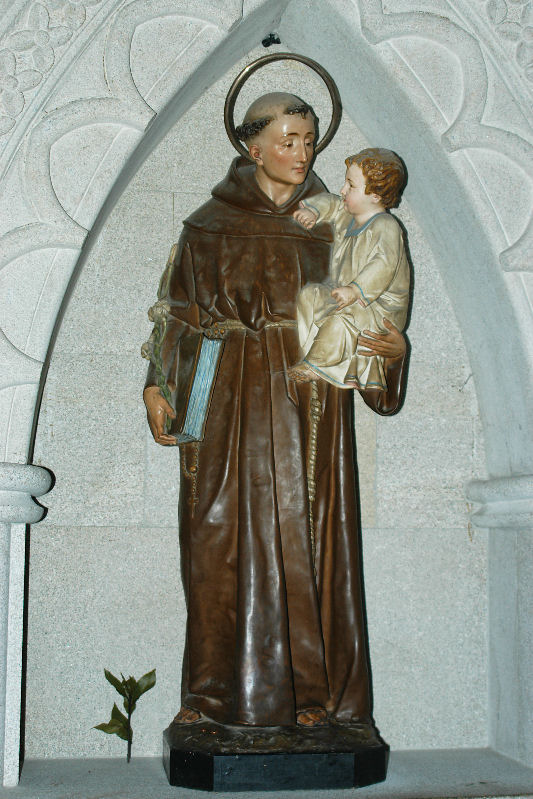

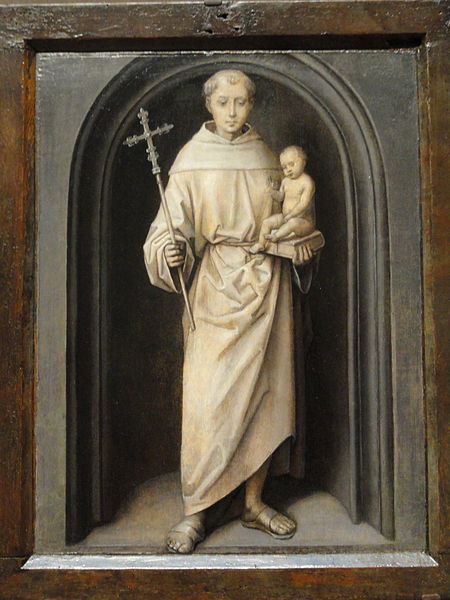
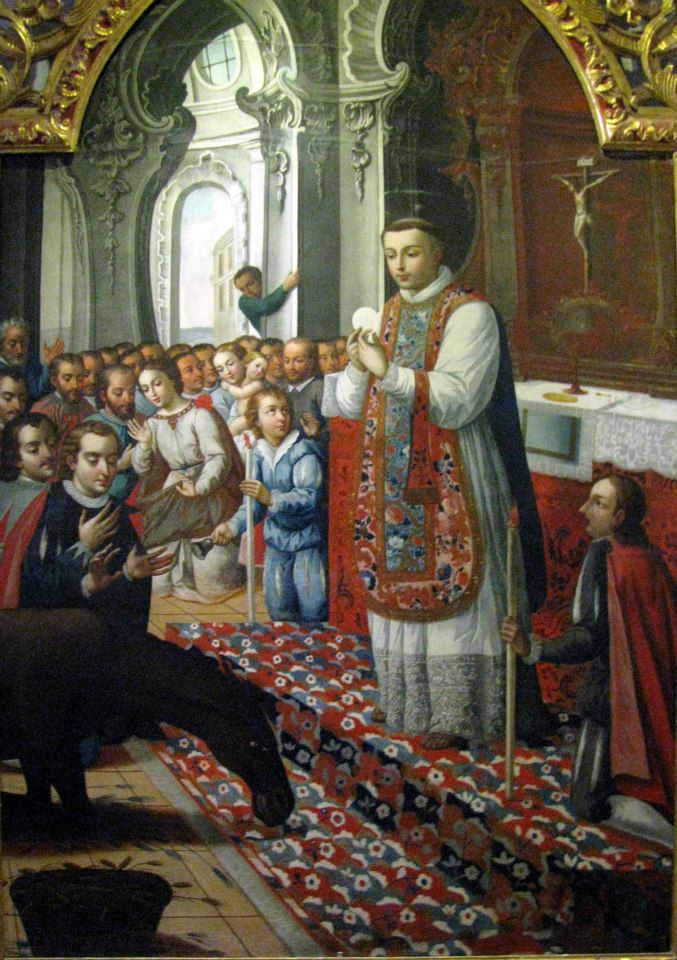
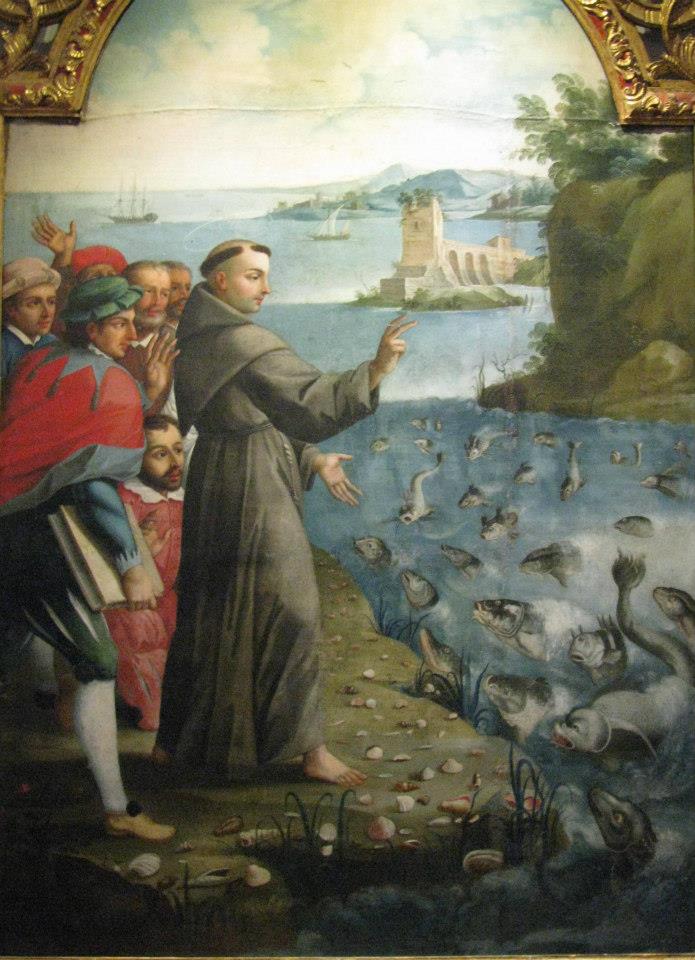
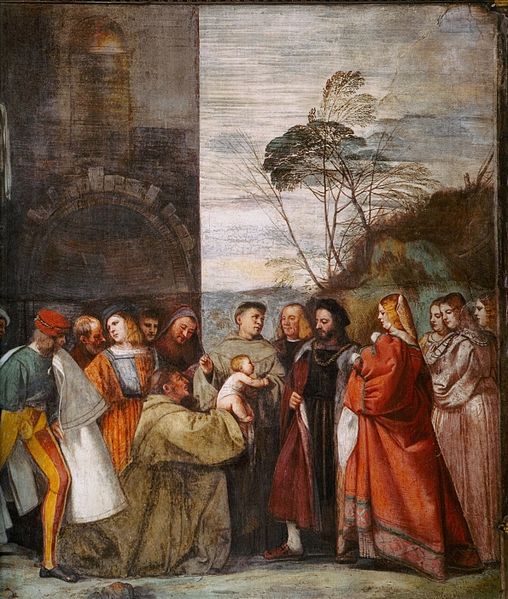

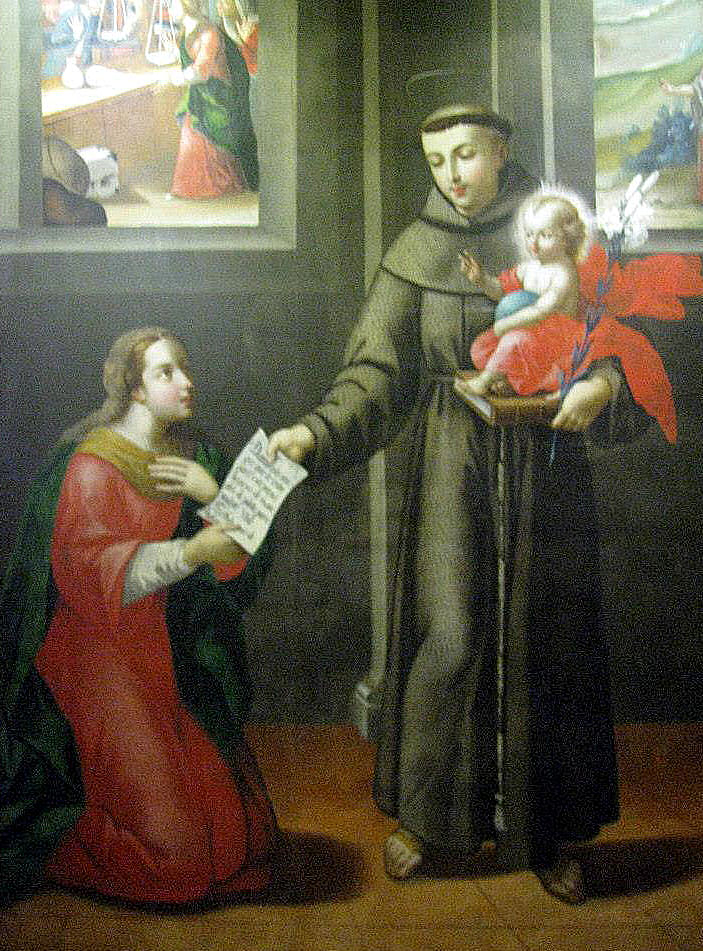
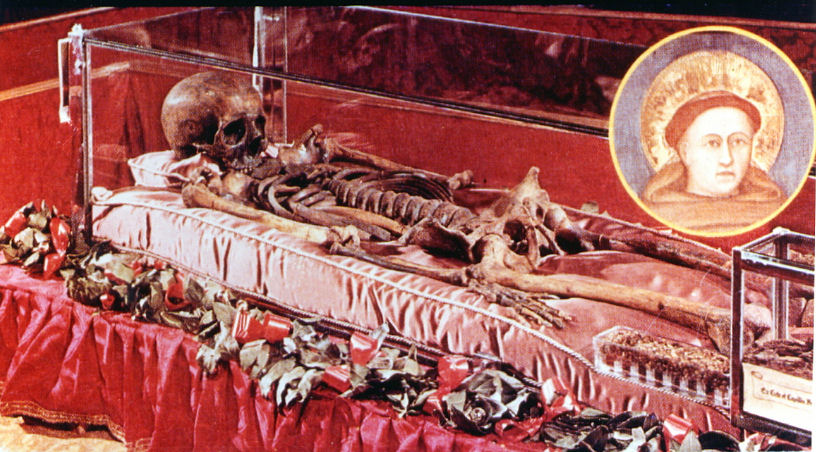
No comments:
Post a Comment